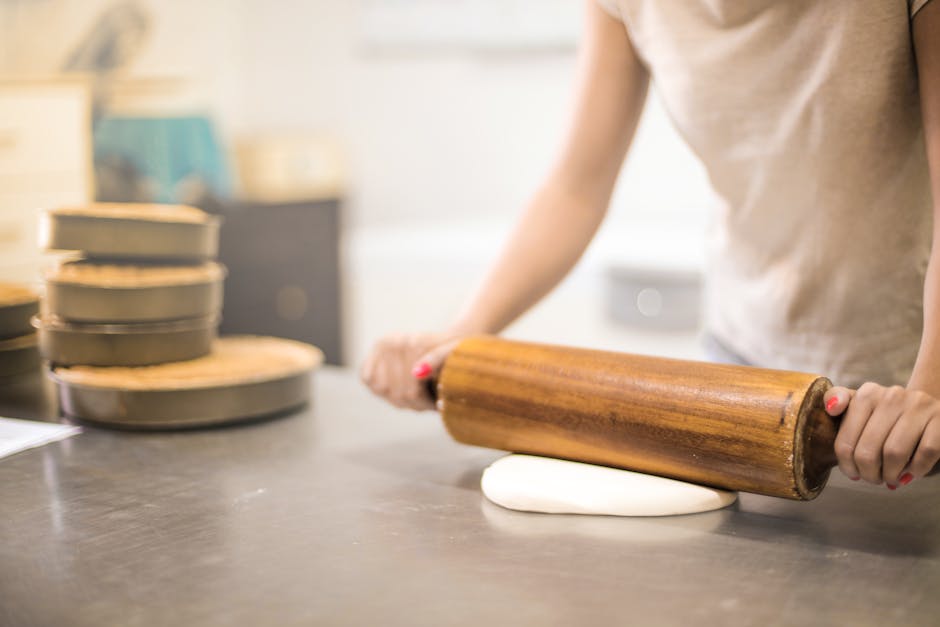Storing a homemade loaf of sourdough bread boasts its own unique set of rules, distinct from conventional bread varieties. Grasping these guidelines will not only prolong the life of your sourdough but also keep it tasting as magnificent as it did fresh out of the oven. This article shares the top five tips for safely storing your sourdough bread.
Tip 1: Allow Sourdough Bread to Cool Completely before Storing
Tempting as it is to tuck your fresh sourdough away for future gustatory pleasure as soon as it leaves the oven, it’s imperative to let it cool entirely first. As the bread cools, steam escapes, preventing moisture from becoming trapped during storage, which could stimulate mould growth.
Pro Tip: Accelerate cooling by placing the bread on a wire rack, encouraging air circulation. A quick note, though: never sack flavour and texture for speed!
✅ Quick cooling checklist:
1. Remove bread from the oven.
2. Place bread on or within a wire rack.
3. Resist the urge to slice or store the bread while still warm.
Tip 2: Store Sourdough Bread in a Bread Box or a Linen Bag
What’s an excellent container for your sourdough? Try a bread box or a linen bag. These options allow the bread to breathe, keeping mould at bay while slowing down the staling process, so your sourdough stays fresher for longer.
Best Practices: When looking for a bread box or linen bag, opt for ones that are easy to clean, adequately sized and breathable. A nice, large, clean container equates to a perfectly preserved sourdough loft.
Comparing bread box and linen bag:
| Bread Box | Linen Bag | |
|---|---|---|
| Pros | Keeps bread air-tight, easy to clean, durable | Lightweight and portable, easy to clean, inexpensive |
| Cons | Can take up counter space, might not accommodate larger loaves | May not be as airtight as a bread box, material can stain easily |
Tip 3: Avoid Storing Sourdough Bread in the Refrigerator
While refrigeration works for many food items, it’s a no-go for sourdough bread. The culprit? The refrigerator’s low moisture environment rapidly dries out your bread, making it stale.
Pro Tip: If you need a longer-term storage solution, opt for freezing instead of refrigeration. It preserves your bread without drying it out.
Benefits of refrigeration vs freezing for storing sourdough bread:
| Refrigeration | Freezing | |
|---|---|---|
| Impact on freshness | Hastens staling process | Preserves bread longer |
| Impact on texture | Can make bread hard | Maintains original texture |
| Impact on taste | Can develop a refrigerator taste | Pretains original flavour |
Tip 4: Wrap Sourdough Bread in Beeswax Wrap for Short-Term Storage
For a quick, eco-friendly solution to keep your sourdough fresh post-baking, beeswax wrap is the perfect answer. It’s a natural, sustainable, and versatile storage method that maintains your bread’s freshness and ensures minimal waste.
✅ Bread wrapping checklist:
1. Once your bread has completely cooled, slice it if desired.
2. Securely wrap the bread or bread slices in the beeswax wrap.
3. Store in a cool, dry location.
Pros and cons of using beeswax wrap:
| Pros | Cons | |
|---|---|---|
| Beeswax Wrap | Eco-friendly, preserves freshness, versatile | Not suited for long-term storage, requires frequent cleaning |
Tip 5: Freeze Sourdough Bread for Long-Term Storage
With the correct freezing and thawing techniques, you can store your sourdough bread for an extended period without compromising its taste and texture. Freezing maintains the freshness of your loaf, allowing you to enjoy fresh, flavorful bread anytime you like.
Best Practices: To freeze your bread, tightly wrap it in a plastic wrap or a freezer bag. To thaw, let it sit at room temperature until it is soft enough to eat. For a fresh-out-the-oven taste, warm it in the oven at 350 degrees Fahrenheit for about 10 minutes. Enjoy!
✅ Freezing and thawing checklist:
1. Allow your bread to cool completely before freezing.
2. Wrap the bread tightly in a freezer bag or plastic wrap.
3. Freeze for up to 3 months for optimal freshness.
4. To defrost, remove the bread from the freezer bag and let it thaw at room temperature.
5. Warm up the bread in the oven if desired.
By following these five tips, you can rest assured that your sourdough will maintain its superior quality whether you choose to savour it immediately or store it for later. Proper storage can significantly extend the life of your loaf, letting you relish the fruits of your labor one delicious slice at a time!
Key Takeaway:
- Allowing sourdough bread to cool completely before storage is critical to preventing increased moisture growth which can cause mould.
- Storing sourdough bread in a bread box or linen bag can help the bread breathe and slow down the staling process.
- Storing sourdough bread in the refrigerator can dry out the bread rapidly and is not recommended. Freezing, however, can be a suitable method for longer-term storage.
- Beeswax wrap can be a suitable method for short-term storage as it helps maintain freshness while minimizing waste.
- For long-term storage, freezing sourdough bread is the best option assuming you use the correct freezing and defrosting techniques.
To ensure your sourdough bread remains fresh and enjoyable for longer, properly storing it is key. With these tips, you can optimize the lifespan and taste of your sourdough bread, allowing you to consume it at your own pace with minimal waste. Remember that understanding your bread’s storage needs and adapting accordingly can yield remarkable results.
FAQs
Q: How long can I store my sourdough bread using these methods?
A: If properly stored using these methods, your sourdough bread should last for several days to a week at room temperature, or for up to 3 months if frozen.
Q: Can I use other types of wraps, not just beeswax, for short-term storage?
A: Yes, other food-safe, breathable wraps can also be used to store your sourdough bread short-term. However, beeswax wraps are recommended for their eco-friendliness.
Q: I don’t have a bread box or a linen bag. Can I use a regular plastic bag instead?
A: While you can use a plastic bag, it isn’t the best option as it does not allow the bread to breathe very well, which can lead to faster mould growth.
Q: Why shouldn’t I store my sourdough bread in the refrigerator?
A: The refrigerator has a low moisture environment which can rapidly dry out your bread, making it go stale faster.
Q: How do I thaw frozen sourdough bread correctly?
A: To thaw frozen sourdough bread, take it out of the freezer and let it sit at room temperature until it becomes soft enough to eat. You can also warm up the bread in the oven for a fresh-baked taste.
Remember to share this article if you found these tips helpful and explore more posts on our site for more baking and storage insights.






